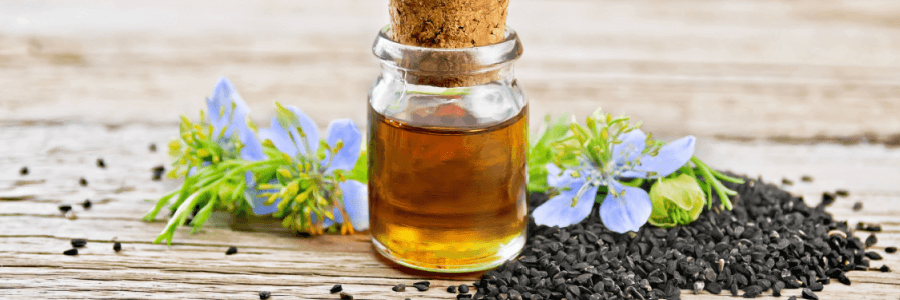What Is Camu Camu? A Comprehensive Guide
|



Camu Camu are small, sour berries that grow on a flowering shrub called Myrciaria dubia. The plant has multiple edible arts that have been used medicinally for years. Camu Camu is a superfood most often consumed for its high vitamin C content. This post will guide you through the most important information about Camu Camu Berry.
- Camu Camu Berry: An Overview
- A Short History
- Where Is Camu Camu Found?
- How To Use Camu Camu
- Why Are People Eating Super Sour Berries?
- Main Highlights & Potential Benefits
- Camu Camu Berry Powder Nutritional Profile
- Conclusion
Camu Camu Berry: An Overview
Scientific Name: Myrciaria dubia.
Other Names: Camu Camu, Rumberry, Guavaberry, Cacari, Zamu Camu Berry.
Appearance: A short shrub with small, berry-like fruit.
Shapes: Resembles a cherry or grape.
Color: Dark red, purple skin with a tender white flesh.
Taste: Sour, tart, acidic, like lime.
Texture: Gritty.
Potential Benefits: High in vitamin C, powerful source of antioxidants, anti-inflammatory properties, antibacterial activity, may boost immunity, delay aging, and protect the skin from sun damage.

A Short History
The Camu Camu Berry has been eaten and drunk as a juice by many different South American tribes for over 700 years. The Amazonian Indians traditionally used the fruit to help treat infections, decrease pain, improve joint function, and to extend life.
It wasn’t until the 1950’s that researchers discovered these berries contain the highest naturally occurring level of vitamin C of all plant food sources. Today, there are large farms or tree nurseries that grow the Camu Camu tree to harvest its fruit and make it more widely available.
Where Is Camu Camu Found?
The Camu Camu shrub is native to the South American rain forest in Peru and Brazil, but can also be found in Columbia, Ecuador and Bolivia. The highest concentration of these shrubs grow near the Amazon River. These trees are most often found growing alongside swamps and river-banks or wherever there is water. They favor a hot, tropical and damp environment.
How To Use Camu Camu
Although Camu Camu looks like a juicy, delicious fruit, it’s not commonly eaten raw. This is because of its extremely sour taste. Instead, it is added as flavoring to desserts like pie, ice cream, candy and assorted beverages. Aside from the fruit itself, the bark and stems of the shrub can be used to brew tea and its pulp is used to make jam, yogurt, juice, etc.
Luckily, these are not the only options when it comes to adding this vitamin C packed super supplement to your diet. Camu Camu is also commonly dried and powderized which actually lessens its natural sour taste. Because the resulting powder has all water removed, it contains more vitamin C per gram than the fresh fruit. These raw Camu Camu Powder supplements can be easily added to smoothies, oatmeal or yogurt.
Why Are People Eating Super Sour Berries?
In reality, they’re probably not eating the fresh berries because of their strange, sour taste. More likely, they are taking Camu Camu Powder as a dietary supplement. This powder is most popularly consumed for its extremely high vitamin C content. Because the human body doesn’t produce this on its own, it’s important to include vitamin C in your diet.
Vitamin C is ascorbic acid. It is the part of the orange, lemon, or lime that helps regenerate tissue, aids in the absorption of iron, decreases LDL, and protects against heart disease. One serving of Camu Camu Powder packs in around 70 milligrams of vitamin C, which is just about an entire day’s worth of vitamin C!
In addition, the citric acid in Camu Camu aids in the absorption of minerals like magnesium, which can help with sleep, energy, digestion, and calm the body down.
That being said, like anything, it’s important not to overdo it. If you try Camu Camu Powder, make sure to follow the directions and do not exceed to the daily recommended dosage. Too much of a good thing can actually be bad! In this case, too much vitamin C can cause digestive upset, diarrhea or nausea.
Main Highlights & Potential Benefits*
- High in vitamin C, manganese, copper, iron, and zinc
- Rich in antioxidants and phytochemicals such as polyphenols, ellagic acid, gallic acid, 1-methylmalate, anthocyanins, and flavonoids
- High in carotenoids like lutein, beta-carotene, and zeaxanthin
- Contains astringent and emollient properties
- Contains 60x the vitamin C of an orange
- Contains 56x the vitamin C of a lemon
- Anti-inflammatory properties
- Cancer preventative
- Antiviral and antibacterial activity
- May increase fertility
- May promote eye health
- Can help prevent diabetes
- Improve immune system function
- Enhance physical performance
- Supports bone health
- May aid oral and gum health
- Heart healthy
Camu Camu Nutritional Profile
According to HealWIthFood.Org, 100g of fresh Camu Camu fruit contains the following:
Calories: 17
Protein: 0.4 grams
Total fat: 0.2 grams
Vitamin C: 2,145 milligrams (3,575% DV)
Carotenoids: 355 micrograms
Conclusion
The Camu Camu Berry is an extremely tart fruit packed with vitamins, minerals, and amino acids. Resembling a cherry when harvested, it is typically dried and powderized to be used as a dietary supplement.
This tiny superfood contains 50x more vitamin C than an orange. Its rich antioxidant profile coupled with its nutrient density offer a wide range of potential health benefits including anti-inflammatory properties, antibacterial activity, strengthening immunity, delaying aging, and supporting bone health, just to name a few.
Camu Camu can be consumed raw (not common because it’s that sour), as juice, or in powder form. Stir the daily serving size into a smoothie or yogurt and you’ve already met your vitamin C goal for the day!
Medical Disclaimer
Please speak with your doctor or other licensed healthcare professional before beginning any new supplement including Camu Camu. None of the content on this site is or should be considered medical advice. The purpose of this article is simply to highlight relevant research for those curious about the potential benefits of consuming Camu Camu.

 Login
Login


